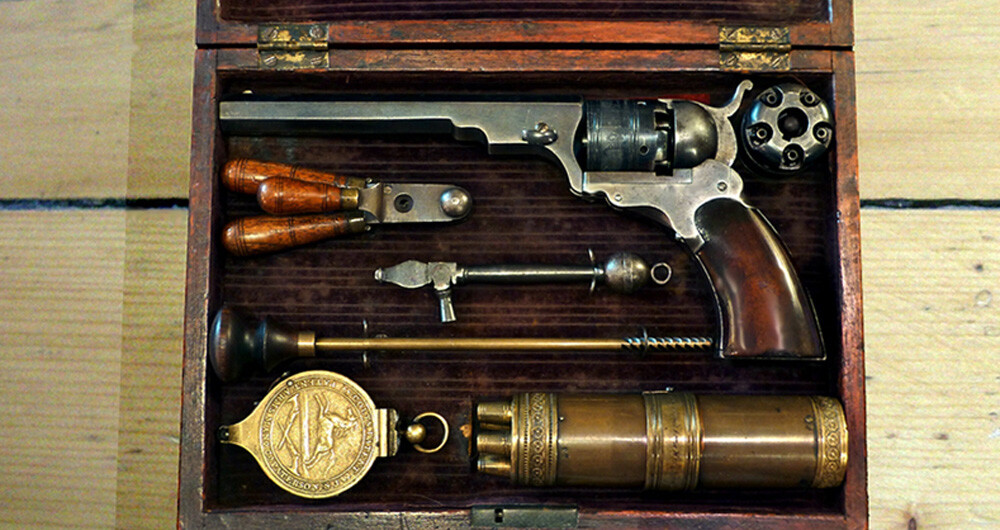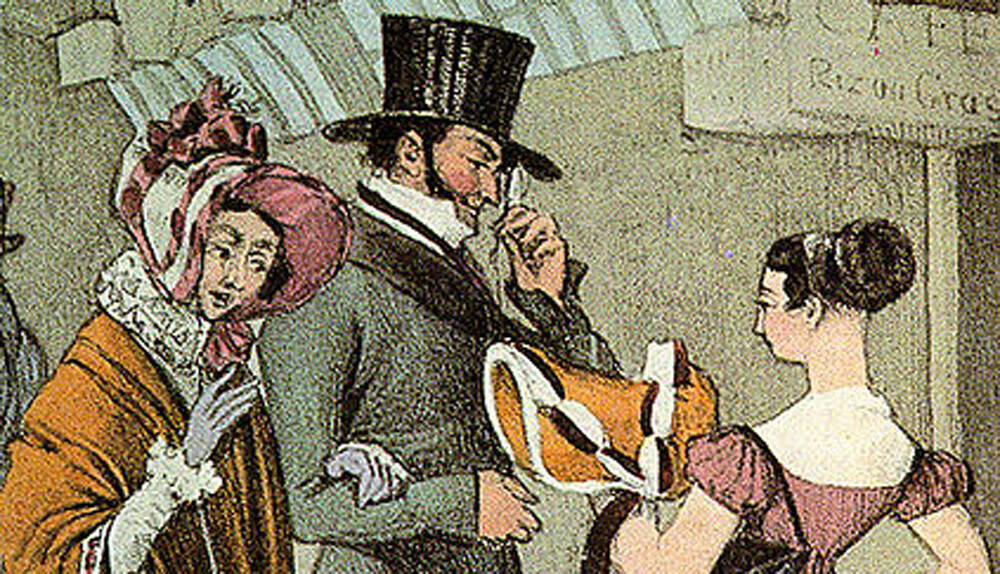Meet The Confederate Terrorist, Who Fought With Fire, Bombs, And Germs

Canada is a land of terrifying supervillains. Who could forget Gerald Bull, the mad inventor whose lifelong dream of building a cannon that could shoot things into space led to his assassination while constructing a “supergun” for Saddam Hussein. Then there was Gerard Blanchard, the master thief who once parachuted onto the roof of a palace and stole an empress’s jewelry, just because he felt like it. And we certainly shouldn’t overlook Eddy Haymour, the theme park owner who assembled a team of gunmen and stormed an embassy to demand the government return control of his mini-golf course. Frankly, if Superman was real, he’d instantly move to Calgary just to cut down on his commute.
But if we’re talking about bizarre Canadian villains, there’s one name who stands out above all others. A man who was born into wealth, but betrayed his family to become a freelance spy, con artist, bioweapons pioneer, and ultimately the most notorious terrorist of the 19th century. We’re talking, of course, about Alexander Keith Jr. Or as Victorian-era newspapers preferred to call him: the Dynamite Fiend.

via Wiki Commons
Keith Killed 80 People With A Massive Bomb In 1875
On 11, December 1875, the German port of Bremerhaven was a hive of activity. The steamship Mosel was about to set off on a transatlantic voyage to America and stevedores were bustling about loading crates of medicinal arsenic, cocaine-flavored wine, lovable pickpockets, and all the other important supplies for a Victorian-era ocean liner. A crowd had gathered to see the ship off, and the passengers cheerfully waved their handkerchiefs as dockhands began to load a particularly heavy barrel marked “caviar,” which was tightly reinforced with iron straps. As they struggled with the weight, the workers were seen to drop the barrel. And then all hell broke loose.
A massive explosion ripped through the port, obliterating anything within 2,500 feet of the barrel. When the smoke cleared, a hole eight feet deep had been punched into the solid stone quay, while the blast could be heard 50 miles away in Hamburg. The Mosel was virtually obliterated, while damage was reported to buildings up to 10 miles away. At least 80 people were killed, and dozens more were left badly injured. But the most curious casualty was a man known locally as William King Thomas, who was found unconscious in his cabin on a nearby ship. It was initially assumed he had been hit by shrapnel, but it soon became apparent that Thomas had watched the explosion, then calmly walked into his cabin, written a couple of letters, and shot himself twice in the head.

Even stranger was the fact that Thomas was soon identified as the owner of the mysterious barrel that caused the explosion. Incredibly, he actually survived for another two weeks after shooting himself, remaining conscious and in terrible pain for most of that time. But he refused to answer questions and his last letters offered few clues. One simply informed his wife and children “you will never see me again,” while the other was a suicide note claiming he had been so affected by the horrible sight of the explosion that he couldn’t bear life anymore. To further deepen the mystery, it soon became clear that “William King Thomas” was a fake name. So just who the hell was this guy?
Mystified, the German police ended up hiring Allen Pinkerton, founder of the famous Pinkerton detective agency. By carefully retracing his route to Bremerhaven, Pinkerton was able to identify “Thomas” as none other than Alexander Keith Jr., the notorious Canadian scammer and Confederate secret agent who had been on the run for years from Pinkerton’s agents and his own disgruntled former colleagues. But who was Keith, and just how did he end up killing 80 people in Germany?
That Wasn’t Even His First Bombing
Keith’s first bombing actually happened in 1857, when a gunpowder magazine (a building that stores gunpowder) exploded in Halifax, Nova Scotia. It killed one person and set fire to several neighborhoods. It was clear that the blast had been triggered deliberately, but a citywide investigation failed to identify the culprit. The obvious suspect was Alexander Keith Jr., who had been the last person to enter the magazine before the explosion, but his family connections meant that he was considered above suspicion.
Keith was the nephew and namesake of Alexander Keith Sr., a former mayor of the city and the founder of Nova Scotia’s beloved Alexander Keith’s Brewery. The brewery is actually still in operation and Alexander Keith’s IPA remains one of the most popular beers in Canada today (having tested it, we can confirm that it tastes of beer, with subtle notes of beer, and a pleasant beer-like aftertaste).

At the time of the explosion, Keith was working for his uncle, who had a sideline selling industrial gunpowder. It later emerged that Keith had been quietly selling his uncle’s high-quality gunpowder and replacing it with cheaper low-grade powder. When the scheme risked discovery, he appears to have detonated the entire magazine to cover his tracks. Although he avoided arrest, Keith soon quit working for his uncle and struck out on his own. Fortunately, an exciting new job market had just opened up for ruthless slime balls with the morals of a vole and the brains of a slightly stupider vole. The American Civil War had broken out and neutral Canada was soon swarming with Confederate spies and smugglers, all determined to disrupt the Union war effort any way they could.
Keith soon became one of the Confederacy’s top agents in Canada. In 1863, Union codebreakers deciphered two letters addressed to him, which revealed his involvement in a shocking variety of schemes, including sabotage, arms smuggling, counterfeiting, piracy, and a plot to burn New York City to the ground. That plan actually went ahead in 1864, when eight Confederate agents slipped south from Canada and checked into hotels around New York. On November 25th, they set fire to their hotels and then began throwing Molotov cocktails into buildings around the city, including P.T. Barnum’s museum of curiosities (obviously a key military target). Fortunately, the arsonists turned out to be extremely incompetent and the fires were quickly extinguished.

But Keith didn’t just operate behind the scenes—he was willing to get his hands dirty. For example, in 1863, Confederate spies disguised as passengers boarded an American steamer at Halifax. After the ship left port, they attempted a hijacking, murdering a crew member in the process. One of the hijackers was later arrested by Canadian authorities, but when they went to turn him over to the American Navy, Keith stepped out of an alley and clubbed a policeman to the ground, while the hijacker leaped into a waiting boat and escaped. Which was a lot less dramatic before the invention of speedboats, since frantically paddling away in a dinghy never looks cool, no matter what Meatloaf song you soundtrack it to. But as the war turned against the Confederacy, Keith soon became engaged in an even more nefarious plot.
He Once Attempted To Devastate The Union With Germ Warfare
By late 1864, most of the South was fully on fire and it was gradually dawning on even the most hardened Confederates that they might be very bad at doing wars. Fortunately, Keith had a terrifying plan to turn the tide. Together with a Kentucky doctor named Luke Blackburn, he plotted to cause major Yellow Fever outbreaks in crowded Northern cities. They hoped that this would spiral into an epidemic, devastating the Union war effort and allowing the Southern armies (now down to three guys and an unfriendly donkey named Kevin) to rally. To spark the outbreak, Keith and Blackburn imported the clothes of dead Yellow Fever patients from Bermuda, where the disease had been raging unchecked.

John James Chalon
This early attempt at biological warfare was considered profoundly shocking. Another doctor Blackburn attempted to recruit threw him bodily from his office, later writing that “it was difficult to conceive of such a diabolical idea, not only to spread havoc among combatants, but among innocent women and children.” But Keith and Blackburn charged right ahead, shipping trunks full of clothes and bedding to be sold secondhand in Northern cities like Washington. They even picked out a particularly nice suit of clothes to send as a deadly gift to Abraham Lincoln, although they eventually dropped that part of the plan, probably because Lincoln was like 12 feet tall and they couldn’t find a suit designed for the Yeti King.
Now, there was one tiny problem with this genius plan: Yellow Fever is spread by mosquitoes. You cannot get it from clothes. Seriously, you could get to third base with a Yellow Fever patient and not get infected. And since the mosquitoes of Washington almost never go shopping for snazzy new outfits at the local thrift market, the attempt to start an outbreak was a total bust. But mosquitoes' role in transmitting Yellow Fever wouldn’t be discovered for another 40 years, so Keith and Blackburn had no way of knowing that their plan wouldn’t work—they were willing to murder tens of thousands of civilians to defend the cause of slavery in a war that was pretty clearly already lost.

After the war, Blackburn was brutally punished for his role by being elected governor of Kentucky (a fate no human should suffer, regardless of their crimes). But Keith would soon be running from his former comrades after the extent of his double-dealing became clear.
Keith Was Secretly Running Scams On His Allies
The whole time Keith had been working for the Confederacy, he had been secretly ripping them off by running his own schemes on the side. For instance, he once pitched a scheme to buy a train from a Northern company, then send it racing through the Union lines to help the Southern war effort. He then pitched this plan to three separate Confederate spies, all of whom ponied up the money to pay for the same locomotive. He simply kept two-thirds of the money and bought the train with the rest. If the train had actually arrived the deception would have been uncovered when all three spies tried to get reimbursed. But luckily somebody tipped off the Union government, who impounded the locomotive before it left the factory. We wonder who that could have been?
Keith was scamming the Confederates in every way he could, but his biggest earner quickly became insurance fraud. The Confederacy was under blockade for most of the war, so Southern smugglers often registered their ships as owned by a citizen of a neutral country, allowing them to claim to be Canadian or British if stopped. For a small fee, Keith would let his name be used on the paperwork of a number of Southern ships. But being the owner on paper also meant that Keith was the beneficiary of the ship’s insurance policy. Whenever a ship sank, Keith would simply keep the payout instead of giving it to the real owners, who found themselves with no legal recourse (“your honor, I was trying to do a crime when this criminal robbed me” seldom goes down well in court). And as the war went on, the ships registered to Keith certainly seemed to start sinking a lot.

via Wiki Commons
In 1864, for instance, the top Confederate spy in Canada, Patrick Martin, set out on his expensive new schooner. Which promptly vanished with all hands, never to be seen again. Shortly afterwards another of Martin’s schooners mysteriously sank, leaving Keith with a six-figure payout. At the time, these were assumed to be accidents, but something was about to happen that would change all that.
His Final Plan Went Horribly Wrong
By December 1864, Keith’s scams had caught up to him and he went on the run, taking a small fortune in swindled money with him. Over the next decade, he supported himself as a kind of roving con artist, constantly moving and changing identities. He was hunted throughout the US by the Pinkertons, who had been hired by some of his creditors to retrieve their money, but he managed to give them the slip by moving to Europe. By the 1870s, he was in Germany, where he mingled with high society. But behind the scenes, Keith was running out of cash. And that’s when his final scheme went into action.
As Russian silk magnate “Peadro Wiskof,” Keith hired a German clockmaker to design a mechanism that would run silently for ten days, then trigger a firing pin. As “M. Garcie of Kingston, Jamaica” he purchased 700 pounds of dynamite from a factory in Cologne. And as “William King Thomas” he had a barrel insured for a small fortune and arranged to ship it on an ocean liner to America. In reality, the barrel was full of explosives. After 10 days, the time bomb would go off and the ship would be sent to the bottom of the ocean, along with hundreds of passengers and crew members, allowing Keith to collect the insurance payout.
Much to his annoyance, the mechanism didn’t work properly the first time and the barrel arrived safe and sound in New York. Keith had to ship it all the way back and rebuild the bomb from scratch. To make matters worse, he was unable to obtain another large insurance policy, as all the brokers insisted on seeing inside the barrel before believing that it was full of gold coins. He eventually obtained a policy for 150 British pounds by claiming it was full of caviar. Which works out to a little under $20,000 in modern money. Despite this, he decided to press ahead with the plan. Seriously, Alexander Keith was about to kill hundreds of people for the price of a used Nissan Sentra.

In the event, the dockworkers dropped the barrel and the blast went off early. Realizing that the barrel would be traced back to him, Keith shot himself twice in the head, then lingered on in agony for two weeks. Which wasn’t even enough time to sue whoever sold him that gun. Ironically, the only person who did well out of the bombing was the clockmaker Keith had tricked into making the timing mechanism. The poor guy was horrified by his role in the blast, but quickly found himself deluged with orders from museums, who all wanted their own copies of the notorious device.
In fact, the explosion did much to popularize the concept of time bombs, which were a relatively new idea at the time, but quickly became popular with revolutionaries across Europe. Just five years later, Russia’s People’s Will terrorist group tried to assassinate the tsar by detonating a time bomb inside the Winter Palace. As the New York Times reported, the device was detonated by the “system of clockwork used by the man Thomas in Bremen some years ago.” Meanwhile, Keith’s remains would ultimately be destroyed in another explosion—his severed head was kept on display in Bremerhaven’s town museum until it was hit by Allied bombs during World War II.

via Wiki Commons






